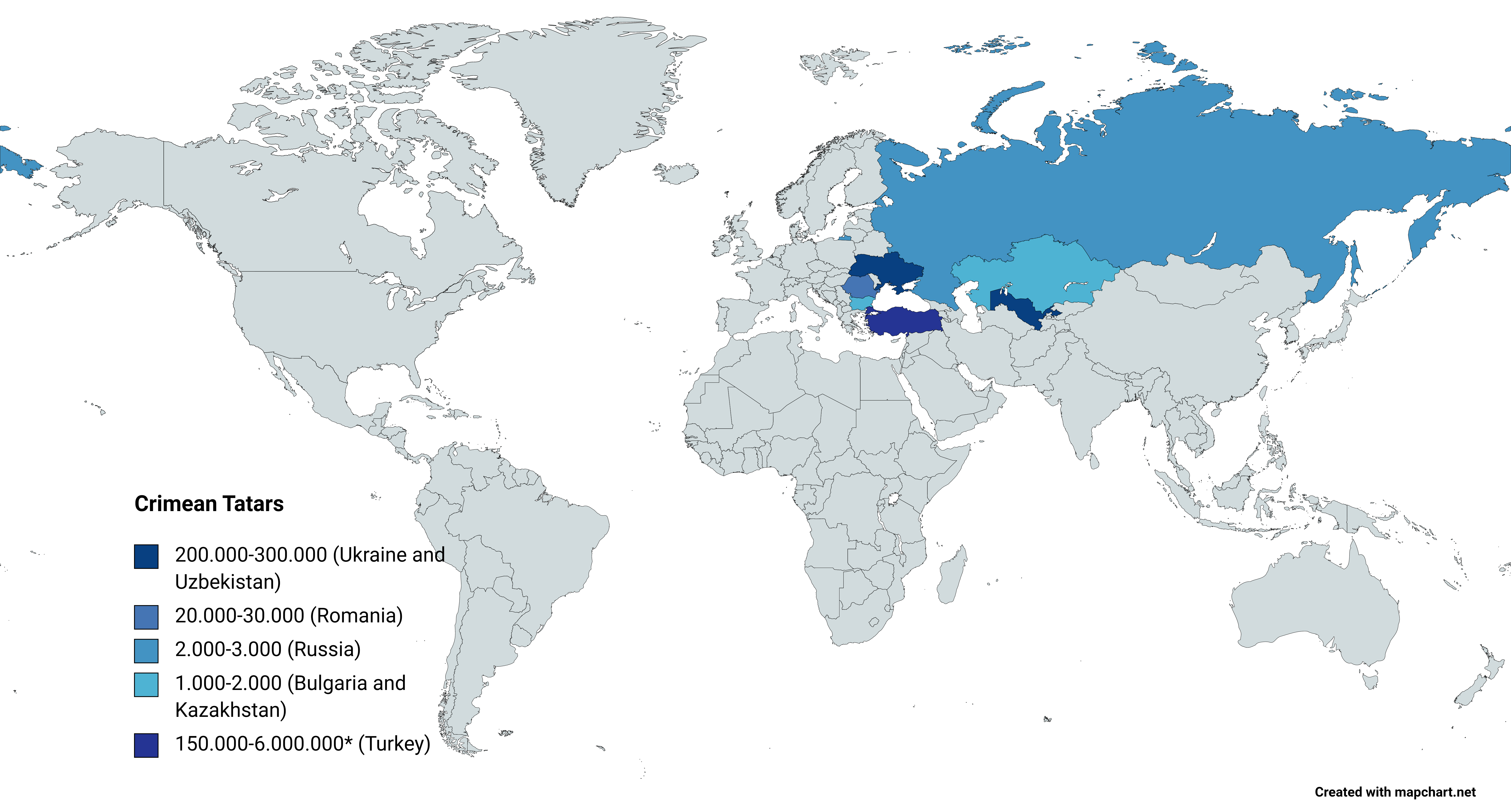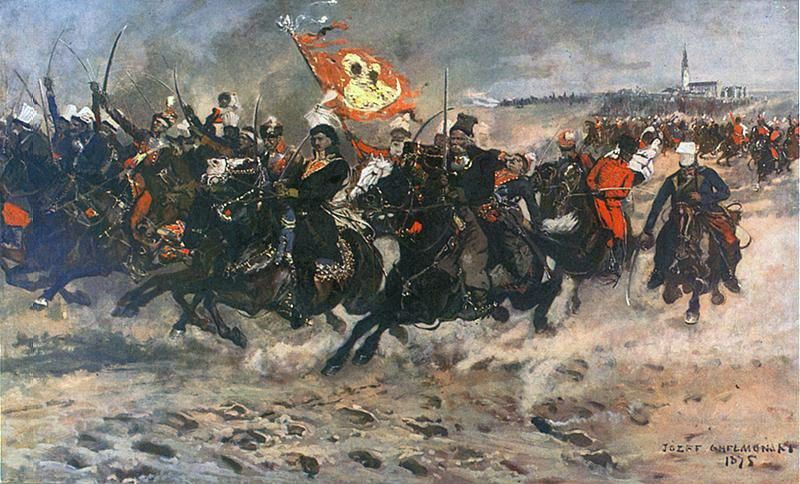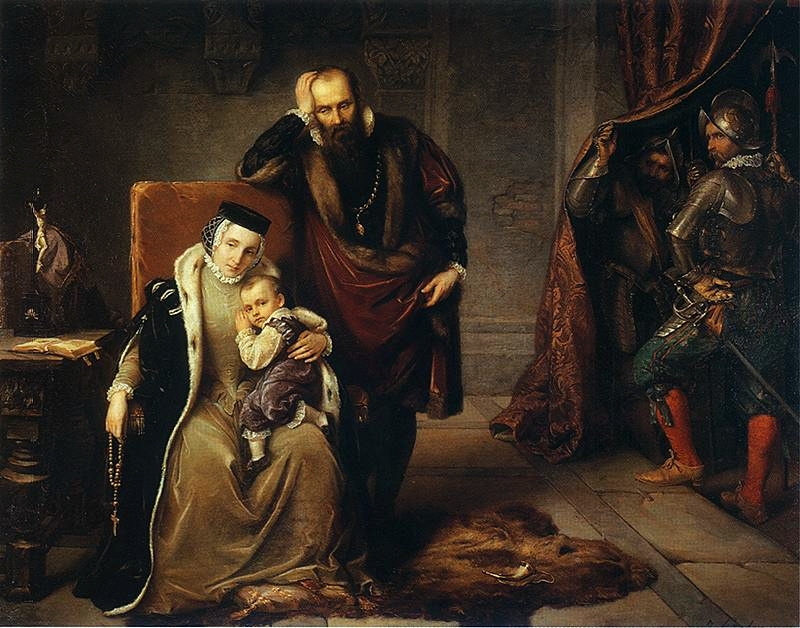|
Battle Of Magierów
The Battle of Magierów took place on 11 July 1657, during Polish history known as the Swedish Deluge. Polish army commanded by Stefan Czarniecki, and supported by Crimean Tatars, defeated a Transilvanian-Cossack-Moldavian-Wallachian army of George II Rákóczi. Background In late January 1657, following the Treaty of Radnot, southern provinces of the Polish–Lithuanian Commonwealth were invaded by the Principality of Transylvania, whose army was commanded by George II Rákóczi. In mid-February near Medyka, the 25,000 Transilvanians joined 10,000 Zaporozhian Cossacks under Anton Zdanowicz. By March 1657, Rakoczi reached Swedish-occupied Kraków. In April, he met Swedish King Charles X Gustav. In May, he captured the city of Brest. By late June, he was in Warsaw. Rakoczi’s campaign was marked by widespread looting, murder, and destruction. In June 1657, the Dano-Swedish War (1657–58) broke out, which forced Charles Gustav to move most of his army to Denmark. Under th ... [...More Info...] [...Related Items...] OR: [Wikipedia] [Google] [Baidu] |
Deluge (history)
The Deluge was a series of mid-17th-century military campaigns in the Polish–Lithuanian Commonwealth. In a wider sense, it applies to the period between the Khmelnytsky Uprising of 1648 and the Truce of Andrusovo in 1667, comprising the Polish theatres of the Russo-Polish and Second Northern Wars. In a stricter sense, the term refers to the Swedish invasion and occupation of the Commonwealth as a theatre of the Second Northern War (1655–1660) only; in Poland and Lithuania this period is called the Swedish Deluge (, Lithuanian: š''vedų tvanas'', ), or less commonly the Russo–Swedish Deluge () due to the simultaneous Russo-Polish War. The term "deluge" (''potop'' in Polish) was popularized by Henryk Sienkiewicz in his novel '' The Deluge'' (1886). During the wars the Commonwealth lost approximately one third of its population as well as its status as a great power due to invasions by Sweden and Russia. According to Professor Andrzej Rottermund, manager of the Roya ... [...More Info...] [...Related Items...] OR: [Wikipedia] [Google] [Baidu] |
Crimean Tatars
Crimean Tatars (), or simply Crimeans (), are an Eastern European Turkic peoples, Turkic ethnic group and nation indigenous to Crimea. Their ethnogenesis lasted thousands of years in Crimea and the northern regions along the coast of the Black Sea, uniting Mediterranean basin, Mediterranean populations with those of the Eurasian Steppe.''Агджоян А. Т., Схаляхо Р. А., Утевская О. М., Жабагин М. К., Тагирли Ш. Г., Дамба Л. Д., Атраментова Л. А., Балановский О. П.'Генофонд крымских татар в сравнении с тюркоязычными народами Европы, 2015 Genome-wide study of the Crimean Tatars unveiled connections between them and the genomes of individuals from the Steppe during the Bronze Age, specifically those associated with the Yamnaya culture, Yamnaya archaeological culture. Until the 20th century, Crimean Tatars were the most populous demographic cohort ... [...More Info...] [...Related Items...] OR: [Wikipedia] [Google] [Baidu] |
Hetman
''Hetman'' is a political title from Central and Eastern Europe, historically assigned to military commanders (comparable to a field marshal or imperial marshal in the Holy Roman Empire). First used by the Czechs in Bohemia in the 15th century, it was the title of the second-highest military commander after the king in the Crown of the Kingdom of Poland and the Grand Duchy of Lithuania from the 16th to 18th centuries. Hetman was also the title of the head of the Cossack state in Ukraine after the Khmelnytsky Uprising of 1648. Throughout much of the history of Romania and the Moldavia, hetmans were the second-highest army rank. In the modern Czech Republic, the title is used for regional governors. Etymology The term ''hetman'' was a Polish borrowing, most likely stemming via Czech from the Turkic title ''ataman'' (literally 'father of horsemen'), however it could also come from the German – captain. Since hetman as a title first appeared in Czechia in the 15th century, as ... [...More Info...] [...Related Items...] OR: [Wikipedia] [Google] [Baidu] |
Łańcut
Łańcut (, ; ; ) is a town in south-eastern Poland, with 18,004 inhabitants, as of 2 June 2009. Situated in the Subcarpathian Voivodeship (since 1999), it is the Capital (political), capital of Łańcut County. History Archeological investigations carried out in the region of Łańcut confirm the existence of human settlements from about 4000 years B.C. The first owner of the town was Otton (''z Pilczy'') Pilecki, who was given the Łańcut estate by the List of Polish monarchs, Polish king, Casimir III the Great, in 1349, as a reward for his service. At the same time, the king also granted Łańcut its Town privileges, city rights according to Magdeburg rights, Magdeburg law. In 1381 Łańcut was officially named a ‘town’ for the first time, by Otton Pilecki, in the foundation charter of the town. Łańcut remained under the ownership of the Pilecki family up to 1586. The city was then owned consecutively by aristocratic Polish families of Stadnicki, Lubomirski family, L ... [...More Info...] [...Related Items...] OR: [Wikipedia] [Google] [Baidu] |
Częstochowa
Częstochowa ( , ) is a city in southern Poland on the Warta with 214,342 inhabitants, making it the thirteenth-largest city in Poland. It is situated in the Silesian Voivodeship. However, Częstochowa is historically part of Lesser Poland, not Silesia, and before the Partitions of Poland, 1795 Partition of Poland, it belonged to the Kraków Voivodeship (14th century – 1795), Kraków Voivodeship. Częstochowa is located in the Kraków-Częstochowa Upland. It is the largest economic, cultural and administrative hub in the northern part of the Silesian Voivodeship. The city is known for the famous Jasna Góra Monastery of the Order of Saint Paul the First Hermit of the Catholic Church, which is the home of the Black Madonna of Częstochowa, a shrines to Mary, mother of Jesus, shrine to Mary, mother of Jesus. Every year, millions of pilgrims from all over the world come to Częstochowa to see it. Częstochowa was also home to Frankism in the late 18th and 19th centuries, an antinom ... [...More Info...] [...Related Items...] OR: [Wikipedia] [Google] [Baidu] |
House Of Vasa
The House of Vasa or Wasa was a Dynasty, royal house that was founded in 1523 in Sweden. Its members ruled the Kingdom of Sweden from 1523 to 1654 and the Polish–Lithuanian Commonwealth from 1587 to 1668. Its agnatic line became extinct with the death of King John II Casimir Vasa in 1672. The Vasa dynasty descended from a 14th-century Swedish noble family, tracing agnatic kinship to Nils Kettilsson (Vasa) (), the of Tre Kronor (castle), ''Tre Kronor'' Castle in Stockholm. Several members held high offices during the 15th century. In 1523, after the Stockholm Bloodbath, Stockholm bloodbath and the abolition of the Kalmar Union, Gustav Eriksson (Vasa) became King Gustav I of Sweden and the royal house was founded. His reign is sometimes referred to as the beginning of the modern Swedish state, which included the King's break with the Catholic Church during the Protestant Reformation and the foundation of the Church of Sweden. However, his eldest son and successor Erik XIV of Sw ... [...More Info...] [...Related Items...] OR: [Wikipedia] [Google] [Baidu] |
John II Casimir
John II Casimir Vasa (; ; 22 March 1609 – 16 December 1672) was King of Poland and Grand Duke of Lithuania from 1648 to his abdication in 1668 as well as a claimant to the throne of Sweden from 1648 to 1660. He was the first son of Sigismund III Vasa with his second wife Constance of Austria. John Casimir succeeded his older half-brother, Władysław IV Vasa. As a prince, John Casimir embarked at Genoa for Spain in 1638 to negotiate a league with Philip IV against France, but was captured by Cardinal Richelieu and imprisoned at Vincennes where he remained for two years. He was released when his brother, Władysław IV, promised never to wage war against France. John Casimir then travelled extensively throughout western Europe and entered the order of Jesuits in Rome in 1643. He was made cardinal by Innocent X, but after returning to Poland, he became a layman and succeeded his brother in 1648. His reign commenced amid the confusion and disasters caused by the great r ... [...More Info...] [...Related Items...] OR: [Wikipedia] [Google] [Baidu] |
Denmark
Denmark is a Nordic countries, Nordic country in Northern Europe. It is the metropole and most populous constituent of the Kingdom of Denmark,, . also known as the Danish Realm, a constitutionally unitary state that includes the Autonomous administrative division, autonomous territories of the Faroe Islands and Greenland in the north Atlantic Ocean.* * * Metropolitan Denmark, also called "continental Denmark" or "Denmark proper", consists of the northern Jutland peninsula and an archipelago of 406 islands. It is the southernmost of the Scandinavian countries, lying southwest of Sweden, south of Norway, and north of Germany, with which it shares a short border. Denmark proper is situated between the North Sea to the west and the Baltic Sea to the east.The island of Bornholm is offset to the east of the rest of the country, in the Baltic Sea. The Kingdom of Denmark, including the Faroe Islands and Greenland, has roughly List of islands of Denmark, 1,400 islands greater than in ... [...More Info...] [...Related Items...] OR: [Wikipedia] [Google] [Baidu] |
Dano-Swedish War (1657–58)
Dano-Swedish War may refer to: * Dano-Swedish War (1470–1471), Danish invasion of Sweden by sea * Dano-Swedish War (1501–1512), military conflict between Denmark and Sweden within the Kalmar Union * Dano-Swedish War (1512–1520), Danish invasion of Sweden ending with Christian II of Denmark becoming king of Sweden * Dano-Swedish War (1657–1658), conflict between Sweden and Denmark–Norway during the Second Northern War * Dano-Swedish War (1658–1660), continuation of the 1657 conflict between Sweden and Denmark–Norway * Dano-Swedish War (1808–1809), war between Denmark–Norway and Sweden during the Napoleonic Wars * Dano-Swedish War (1813–1814), Swedish invasion and occupation of the Danish duchies of Schleswig and Holstein See also * List of wars between Denmark and Sweden This is a list of wars between Denmark and Sweden. Broadly construed, it may refer to one of multiple wars which took place between the Kingdom of Sweden and the Kingdom of Denmark (fro ... [...More Info...] [...Related Items...] OR: [Wikipedia] [Google] [Baidu] |
Brest, Belarus
Brest, formerly Brest-Litovsk and Brest-on-the-Bug, is a city in south-western Belarus at the border with Poland opposite the Polish town of Terespol, where the Bug (river), Bug and Mukhavets rivers meet, making it a border town. It serves as the administrative center of Brest Region and Brest District, though it is administratively separated from the district. it has a population of 346,061. Brest is one of the oldest cities in Belarus and a historical site for many cultures, as it hosted important historical events, such as the Union of Brest and Treaty of Brest-Litovsk. Furthermore, the Brest Fortress was recognized by the Soviet Union as a Hero Fortress in honour of the defense of Brest Fortress in June 1941. In the High Middle Ages, the city often passed between Poland, the principalities of Kievan Rus', and the Grand Duchy of Lithuania. From the Late Middle Ages, the city was part of Lithuania, which later became a part of the Polish–Lithuanian Commonwealth from 1569. ... [...More Info...] [...Related Items...] OR: [Wikipedia] [Google] [Baidu] |
Charles X Gustav Of Sweden
Charles X Gustav, also Carl X Gustav (; 8 November 1622 – 13 February 1660), was King of Sweden from 1654 until his death. He was the son of John Casimir, Count Palatine of Zweibrücken-Kleeburg and Catherine of Sweden. After his father's death he also succeeded him as Pfalzgraf. He was married to Hedwig Eleonora of Holstein-Gottorp, who bore his son and successor, Charles XI. Charles X Gustav was the second Wittelsbach king of Sweden after the childless king Christopher of Bavaria (1441–1448) and he was the first king of the Swedish ''Caroline era'', which had its peak during the end of the reign of his son, Charles XI. He led Sweden during the Second Northern War, enlarging the Swedish Empire. By his predecessor Christina, he was considered ''de facto'' Duke of Eyland (Öland), before ascending to the Swedish throne. From 1655 to 1657, he was also Grand Duke of Lithuania. His numbering as ''Charles X'' derives from a 16th-century invention. The Swedish king Char ... [...More Info...] [...Related Items...] OR: [Wikipedia] [Google] [Baidu] |
Kraków
, officially the Royal Capital City of Kraków, is the List of cities and towns in Poland, second-largest and one of the oldest cities in Poland. Situated on the Vistula River in Lesser Poland Voivodeship, the city has a population of 804,237 (2023), with approximately 8 million additional people living within a radius. Kraków was the official capital of Poland until 1596, and has traditionally been one of the leading centres of Polish academic, cultural, and artistic life. Cited as one of Europe's most beautiful cities, its Kraków Old Town, Old Town was declared a UNESCO World Heritage Site in 1978, one of the world's first sites granted the status. The city began as a Hamlet (place), hamlet on Wawel Hill and was a busy trading centre of Central Europe in 985. In 1038, it became the seat of King of Poland, Polish monarchs from the Piast dynasty, and subsequently served as the centre of administration under Jagiellonian dynasty, Jagiellonian kings and of the Polish–Lithuan ... [...More Info...] [...Related Items...] OR: [Wikipedia] [Google] [Baidu] |







